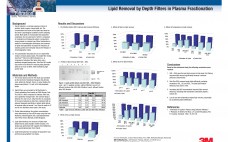Due to the molecular complexity of monoclonal antibodies (MAbs) and potential impurities in cell culture media before purification (host-cell proteins, DNA, media components) (1), subsequent downstream operations must consistently and reproducibly purify products to ensure safety and efficacy. The latest member of GE Healthcare’s MabSelect family is called MabSelect SuRe LX (2). As Table 1 shows, it has been developed using the same highly cross-linked agarose base matrix and protein A ligand as for other MAb affinity resins (Table 1).…
Downstream Processing
Current Issues in Assuring Virological Safety of Biopharmaceuticals
The weakest link in the chain is also the strongest. It can break the chain.— Stanislaw Jerzy Lec, Polish writer, poet and satirist (1906–1966) Biologicals ushered in a new era for treating debilitating and life-threatening illnesses. According to a Pharmaceutical Research and Manufacturers of America (PhRMA) 2011 report, more than 900 biotech medicines and vaccines are in development that are targeting more than 100 diseases (1). Market researchers expect annual sales of biologics (now at about US$100 billion) to grow…
Production and Purification of a PER.C6-Expressed IgM Antibody Therapeutic
Immunoglobulin G (IgG) antibodies have been used to treat cancer for many years (1). Another class of antibodies—immunoglobulin M (IgM)—has been overlooked in spite of offering unique advantages that make them highly desirable as cancer therapeutics. Serving a valuable function in our innate immune system, IgM antibodies are the first to be secreted when an abnormal cell is present (2). These antibodies play a critical role in recognition and elimination of infectious particles (3,4), in removal of intracellular…
Evaluating Library Databases for Microbial Identification: Critical Aspects and Recommendations
A thorough evaluation process for microbial identification systems should consist of both a technical and financial review, regardless if you are performing internal testing and outsourcing. Assessment of the library database used for microbial identifications is a critical component of evaluating a system or service in its ability to generate accurate identifications. Comprehensive depth of entries, accuracy and coverage of relevant species frequently found in aseptic and sterile manufacturing environments have a significant impact on both performance and cost. Databases…
When downstream process is able to withstand upstream changes! An example of clarification sequence optimization in viral vaccine production
While improving cell growth and viral productivity in USP, DSP may become the production bottleneck if not able to withstand changes. Such a case appears when optimizing cell culture media during the development of a viral vaccine candidate. Thirty percent expression increased was balanced by twenty percent yield loss and filters clogging during the clarification step. As a consequence, clarification sequence was not scalable anymore for the further manufacturing. The poster describes sanofi pasteur approach to overcome this issue and…
Characterization of a Novel High-Capacity Weak Cation Exchange Resin
Ion exchange resins with increased selectivity and binding capacity are now in demand and it is imperative for chromatographers to have such resins in their repertoire. The Toyopearl GigaCap® family of resins was created to meet these demands. This poster will focus on Toyopearl GigaCap CM-650M resin as a novel high-capacity weak cation exchange resin for the purification of biomolecules. A polymethacrylic base bead, Toyopearl HW-65, was chemically modified with carboxymethyl groups in the 1000Ã… pores of the bead which…
Evaluation of Ultra Performance Size Exclusion Chromatography for the Analysis of Proteins and Higher Order Aggregates
Complete characterization and analysis of biopharmaceuticals includes size exclusion chromatography (SEC) to measure protein aggregates and other size variants. Current silica-based HPLC-SEC methods can be time-consuming and unreliable. New advances in packing materials and instrumentation have allowed faster and more reproducible separations to be achieved. Improvements in resolution, sensitivity and throughput will be demonstrated for sub-2 μm SEC packing materials as compared to traditional silica-based columns. The effect of pore size and particle size for the analysis of aggregates and…
Lipid Removal by Depth Filters in Plasma Fractionation
We herein describe a 3M Purification Inc. depth filter media – Zeta PlusTM DELI that exhibits selective adsorptive properties for plasma lipids. Lipids plug chromatographic columns and filters during plasma fractionation steps and cause solution instability for the final product. Several parameters which could affect the lipid removal efficiency on Zeta Plus DELI have been investigated: prefiltration, contact time, ionic strength, pH, and temperature. The maximum percentage of total lipids eliminated, in optimal operating conditions, was 68%. This method has…
Salt-tolerant cation exchanger for direct capture of proteins
Ion-exchange chromatography is widely used for the purification of biotherapeutic proteins. Usually, cation exchangers are applied in the primary capture step of proteins with alkaline pI. Conventional ion-exchange chromatography has the advantage of high-binding capacity, but it requires low salt conditions for protein binding and consequently adjustment of conductivity of clarified culture supernatant. An alternative method to maintain some binding capacity at higher conductivity levels is working at low pH condi¬tions notwithstanding that some proteins are sensitive to acid treatment.…
Protein A Cellulose, a new mAb purification platform
Protein A chromatography is widely used as capture step in monoclonal antibody purification processes. Many types of chromatographic media are commercially available for this application however mainly Agarose and Porous glass based products are considered as standard mAb purification platforms due to high dBC and high operational flow rates. In fact process optimization of Protein A step is mainly aimed to have higher capacity and lower elution volumes in shorter process time. In this context Kaneka has been investigating highly…







